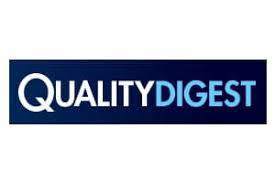Many tools and concepts can be applied when implementing a transformation in a business. But what makes the transformation meaningful? What is the thing that will drive the transformation’s success?
It’s not how well standard work is written or the number of pull cards in the loop, although it’s necessary to do those things correctly. That meaningful thing is how you choose to engage the people in the organization to make those tools and concepts successful.
One of the concepts presented by the Toyota Production System (TPS) is respect for people. In our experience, engagement happens in small pockets but is rarely viewed as the foundation of the implementation process.
It seems like common sense: “Of course, we talk to our people every day.” But it’s more than meetings about the day-to-day operational performance. It’s building trust through transparency and open, two-way communication. Does the entire team know the vision? Are the value stream maps, future plant layouts, and performance metrics posted where everyone can see them? Do operators know what changes are coming to their area and why? The why is a huge part of helping everyone understand the changes being made and the reasons behind them.
Here are a few tips to make a transformation meaningful:
Communicate frequently and consistently. There’s no such thing as overcommunicating. Take every employee interaction as an opportunity to gain trust. Include them in the plans. Use shift startup meetings not only to review yesterday’s performance but also to share the changes they can expect. Hold monthly town hall meetings and choose a topic or process to review with the team. Every time you sign a day-by-hour chart, ask the operators if they have any issues and ideas on how to resolve them. There should be no surprises to team members. Discussing how upcoming changes will affect your employees is imperative to the transformation’s success.
Ask for input before making significant changes to the process. Who knows better how the process or equipment works than the person running it every day? What struggles does she have? What suggestions would she make to improve? Not every idea is possible to implement, but if an idea isn’t feasible, discuss why it can’t or won’t be implemented.
Encourage experimentation. So much of learning is trial and error. Providing a safe environment for teams to try new concepts without fear of penalty will accelerate the transformation and drive engagement. The only rules are to do so safely and always protect the customer. For example, don’t propose a work-in-progress (WIP) market to reduce inventory without having a buffered amount set aside while trying the new process. You never know what complications could arise, and you don’t want to put the customer at risk.
Provide positive feedback. Often, the focus is on our people’s weaknesses. But what if instead we recognized what they are great at and found ways to use their strengths more often? Say you have an operator who understands how the processes fit together; perhaps he would be great at moving all the material and information throughout the facility. Uplift people through positive reinforcement and take the opportunity to address issues immediately; don’t wait until that annual review cycle. You can create a positive environment where feedback is welcomed and not dreaded.
Follow up, follow up, follow up. When employees come to you with improvement ideas, that’s when you’ve changed the culture. Nothing will kill it faster than ignoring those idea generators. Let them know where their suggestions stand with implementing it. Some ideas take longer to implement than others, and that’s OK—after all, you’re going through a transformation with a whole lot of action items to complete. But give employees the courtesy of knowing you haven’t forgotten about them. This will go a long way with continued participation.
Celebrate all wins, even the small ones. Offer personal thanks and share victories publicly. Tell the success stories of idea implementation and benefits. Have a problem-solving team report to the plant on the process used to solve a problem and how the results affect the business. Then throw a pizza party; food is a popular celebration item. The more you recognize your team members, the more they will feel appreciated and want to make sustainable changes. (It’s also good to share what was learned from new things that were tried and didn’t work. That will let people know it’s OK to be creative.)
These are just a few suggestions for creating a meaningful transformation. But the point is that people are your key to success in creating sustainable change. Be creative in engaging your employees. If you don’t know what will be important to them, just ask them. They will tell you what’s important to their work culture and what resonates with team members.
Remember, you can implement all the lean and quality tools available, but unless you have the hearts and minds of the people, the transformation will be neither meaningful nor sustainable.
https://www.qualitydigest.com/inside/management-column/implementing-meaningful-and-sustainable-transformations-021422.html

